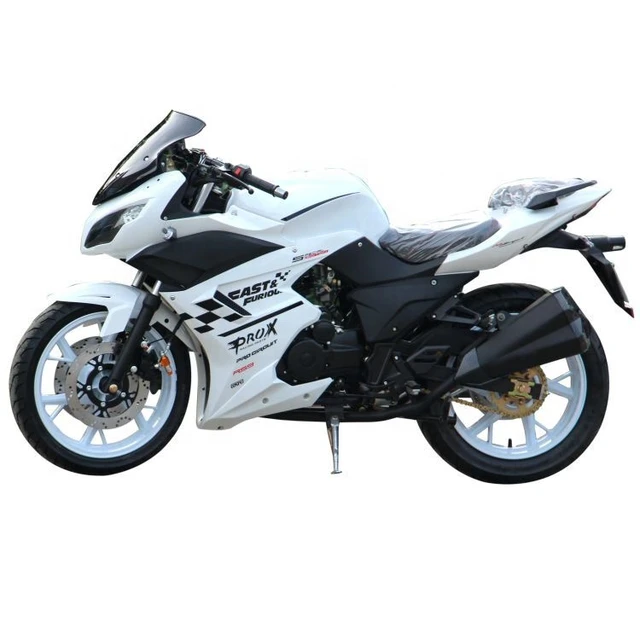Road safety is a critical issue that affects everyone, regardless of the vehicle they choose to drive. However, when comparing motorcycles and cars, the risks and fatalities associated with each can vary significantly. Motorcycle riders often face a higher risk of fatality compared to car drivers, but the reasons behind these statistics are multifaceted. By understanding the differences in motorcycle deaths vs car deaths, we can better grasp the unique dangers each mode of transportation presents and explore ways to enhance road safety.
Statistical Overview
Comparing Fatality Rates
Motorcycle deaths occur at a significantly higher rate compared to car deaths. According to data from the National Highway Traffic Safety Administration (NHTSA), motorcyclists are about 28 times more likely to die in a crash than occupants of passenger vehicles per vehicle mile traveled. This stark difference highlights the vulnerability of motorcyclists on the road. Factors such as lack of protective barriers, visibility issues, and the inherent instability of two-wheeled vehicles contribute to the heightened fatality rates for motorcyclists.
Number of Deaths Per Year
Statistical data reveals that even though fewer motorcycles are on the road compared to cars, the proportion of fatal incidents involving motorcycles is disproportionately high. For instance, in 2019, there were 5,014 motorcyclist deaths in the United States, compared to 22,215 occupant fatalities in passenger vehicles. While the raw number of car deaths is higher, the fatality rate per registered vehicle and per mile traveled is significantly higher for motorcycles. This discrepancy underscores the importance of targeted safety measures for motorcyclists.
Trends Over Time
Over the years, both motorcycle and car fatalities have shown varying trends. While safety innovations in cars have contributed to a decline in car deaths, motorcycle fatalities have not seen the same steady decrease. The fluctuating trend in motorcycle deaths can be attributed to factors such as helmet usage rates, the increasing popularity of motorcycles, and varying levels of rider training and experience. Analyzing these trends helps identify areas where safety efforts can be intensified to reduce fatalities.
Factors Contributing to Higher Motorcycle Fatalities
Lack of Protective Barriers
One of the primary reasons for the higher fatality rate among motorcyclists is the lack of protective barriers. Unlike car drivers, motorcyclists have no metal frame, airbags, or seatbelts to shield them in the event of a crash. This absence of protection results in direct exposure to impact forces, increasing the likelihood of severe injuries or death. Motorcyclists rely heavily on personal protective gear, such as helmets and jackets, to mitigate some of the risks, but these measures offer limited protection compared to the safety features built into modern cars.
Visibility Issues
Motorcycles are smaller and can be harder for other drivers to spot, especially in poor weather conditions or heavy traffic. Many motorcycle accidents occur because car drivers fail to see the motorcyclist until it’s too late. This visibility issue is compounded by factors such as blind spots, distracted driving, and smog or fog conditions. Educating both motorcyclists and car drivers about sharing the road and enhancing visibility through measures like reflective gear and daytime running lights can help mitigate this risk.
Instability and Control
Motorcycles are inherently less stable than cars due to their two-wheeled design. This instability makes it easier for motorcyclists to lose control, especially during sudden maneuvers or on slippery surfaces. Factors like speed, braking force, and road conditions significantly affect a motorcycle’s stability. Advanced rider training programs that focus on handling skills and emergency maneuvers can improve motorcyclists’ ability to maintain control in challenging situations, reducing the likelihood of accidents.
Preventative Measures
Use of Helmets
Helmet use is one of the most effective ways to reduce fatalities among motorcyclists. According to the NHTSA, helmets are estimated to be 37% effective in preventing motorcycle deaths. Despite this, not all states in the U.S. have universal helmet laws, and compliance varies widely. Promoting helmet use through legislation, public awareness campaigns, and rider education can significantly improve safety outcomes for motorcyclists. Additionally, encouraging the use of helmets that meet or exceed safety standards ensures maximum protection in the event of a crash.
Rider Training Programs
Comprehensive rider training programs can equip motorcyclists with the skills needed to handle their bikes safely and effectively. These programs cover crucial topics such as defensive riding, emergency braking, and hazard recognition. Experienced instructors provide practical training in controlled environments, allowing riders to develop their skills before facing real-world traffic. Investing in rider education not only enhances individual safety but also contributes to a culture of responsible riding.
Safety Gear
In addition to helmets, wearing appropriate safety gear can reduce the severity of injuries in motorcycle accidents. Protective clothing, such as jackets, gloves, and boots, can guard against road rash and abrasions. Armor inserts and reinforced materials offer additional protection to vital areas. Promoting the importance of full protective gear through educational initiatives and incentivizing their use can improve safety outcomes for motorcyclists. Understanding the specific types of gear available and their benefits helps riders make informed choices about their safety.
Car Safety Innovations
Advanced Safety Features
Modern cars come equipped with advanced safety features that have contributed to a decline in car deaths. Features such as airbags, seatbelts, anti-lock braking systems (ABS), and electronic stability control (ESC) provide multiple layers of protection for occupants. Forward-collision warning, automatic emergency braking, and lane departure warning systems further enhance safety by preventing crashes before they occur. The continuous development and adoption of these technologies play a crucial role in reducing fatalities and ensuring safer roadways.
Crashworthiness
Crashworthiness refers to a car’s ability to protect its occupants during an accident. Vehicle manufacturers conduct rigorous crash tests to assess the effectiveness of safety features and structural integrity. Improvements in car design, such as crumple zones, reinforced passenger compartments, and side-impact protection, have significantly enhanced crashworthiness. These advancements ensure that the impact force is absorbed and distributed away from occupants, reducing the likelihood of severe injuries or death.
Driver Assistance Systems
Driver assistance systems, such as adaptive cruise control, blind-spot detection, and parking assist, help drivers navigate safely and avoid potential hazards. These systems use sensors, cameras, and radar to monitor the vehicle’s surroundings and provide real-time feedback to the driver. By alleviating the burden of certain driving tasks, driver assistance systems reduce the risk of human error, which is a leading cause of accidents. The integration of these technologies into more vehicle models enhances overall road safety and driver confidence.
 Behavioral Factors
Behavioral Factors
Speeding and Reckless Driving
Both motorcyclists and car drivers are susceptible to speeding and reckless driving, which are significant contributors to road fatalities. High speeds reduce reaction time and increase the severity of crashes. Encouraging responsible driving behaviors through education, enforcement of speed limits, and public awareness campaigns can mitigate the risks associated with speeding. Promoting a culture of safety and respect on the road is crucial for preventing accidents and saving lives.
Alcohol and Drug Impairment
Driving under the influence of alcohol or drugs is a leading cause of fatal accidents for both motorcycles and cars. Impaired drivers have reduced reaction times, impaired judgment, and lower coordination, making it difficult to operate their vehicles safely. Strict enforcement of DUI laws, sobriety checkpoints, and educational campaigns about the dangers of impaired driving are essential for reducing these preventable deaths. Raising public awareness about the consequences of impaired driving fosters a safer and more responsible driving culture.
Distracted Driving
Distracted driving, whether due to texting, eating, or other activities, significantly increases the risk of accidents. For motorcyclists, even a momentary lapse in attention can lead to a deadly crash. Car drivers distracted by their phones or in-car systems are less likely to notice motorcyclists and other road users. Implementing measures to combat distracted driving, such as hands-free laws and public awareness campaigns, can safeguard all road users. Encouraging drivers to prioritize attention and focus while driving promotes a safer road environment.
Legislative and Policy Interventions
Universal Helmet Laws
One of the most effective legislative measures to improve motorcycle safety is the implementation of universal helmet laws. States with mandatory helmet laws have significantly lower fatality rates compared to states without such regulations. Advocacy for universal helmet laws, backed by data-driven research and public support, can lead to widespread adoption and enforcement. By prioritizing rider safety, universal helmet laws contribute to a substantial reduction in motorcycle fatalities.
Stricter DUI Enforcement
Enhanced DUI enforcement, including higher penalties and increased checkpoints, can deter individuals from driving under the influence. Legislators and law enforcement agencies must work together to strengthen DUI laws and ensure consistent enforcement. Publicizing enforcement efforts and emphasizing the consequences of impaired driving can further discourage this dangerous behavior. Stricter DUI enforcement measures play a crucial role in preventing accidents and protecting all road users.
Campaigns and Education
Public awareness campaigns that educate both motorcyclists and car drivers about road safety can lead to better outcomes. These campaigns can address topics such as sharing the road, the importance of wearing protective gear, and the dangers of impaired and distracted driving. Collaborations between government agencies, non-profits, and community organizations can amplify these messages and reach a broader audience. Comprehensive education efforts foster a culture of safety, encouraging responsible behaviors and reducing preventable accidents.
Conclusion
The comparison of motorcycle deaths vs car deaths reveals a complex and multifaceted issue. While motorcyclists are at a higher risk of fatality due to factors like lack of protective barriers and visibility issues, targeted measures can significantly improve safety. The adoption of advanced safety features in cars has led to a decline in car fatalities, but motorcyclists often rely on personal protective gear and rider training programs to mitigate risks. By addressing behavioral factors, implementing legislative and policy interventions, and prioritizing public education, we can work towards reducing fatalities for both motorcyclists and car drivers. Understanding the unique challenges each mode of transportation presents and taking proactive steps to enhance safety is essential for creating safer roadways for everyone.


